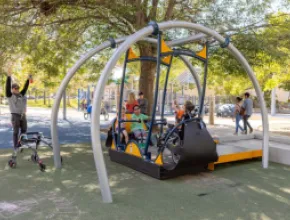
The Florida Swims Foundation and Step Into Swim have joined forces to provide life-saving swim lessons to children throughout Florida.The
|
|
April 22, 2024
The Florida Swims Foundation and Step Into Swim have joined forces to provide life-saving swim lessons to children throughout Florida.The
April 22, 2024
On Monday, April 15, at Sandstone Ridge Park in North Las Vegas, the U.S. Soccer Foundation opened its 700th mini-pitch—a significant milestone in
April 22, 2024
Bradley Company, the leading source for high-quality locker room equipment, introduces a new collection of
April 22, 2024
Yamaha Motor Corp., USA, announced it will be the exclusive motorized recreation sponsor of the Recreation exhibit at the National Conservation
April 22, 2024
The first-ever attractions industry economic analysis for the Middle East region including several African countries is now unveiled. This
April 22, 2024
When your high school is on the edge of the largest mountain range in North America, you tend to think big, and that’s exactly what Fountain-Fort
April 22, 2024
The most common type of sports-related amenity currently included in the facilities of respondents to the Industry Report survey is outdoor sports
April 17, 2024
On Saturday, April 20, YMCA locations across the country are taking part in the Y’s Healthy Kids Day®, the Y’s nationwide initiative to help build
April 15, 2024
Hayward Holdings, Inc. (NYSE: HAYW) (“Hayward” or the “Company”), a global designer, manufacturer, and marketer of a broad portfolio of pool
April 15, 2024
On March 27, the City of Saraland, Alabama, hosted a groundbreaking ceremony to
April 15, 2024
Royal Caribbean International’s Icon of the Seas is a 20-deck, $2 billion-plus ship that set sail on January 27 from Port Miami with 2,350 crew
April 15, 2024
Ignite Attachments, a breakthrough manufacturer of compact equipment attachments, continues to disrupt
April 15, 2024
Lake Chelan in north-central Washington state is more than 50 miles of crystal clear, glacier-fed lake surrounded by beautiful vineyards, mountains
April 15, 2024
Hybrid cricket pitches have been installed at the Himachal Pradesh Cricket Association (HPCA) Stadium in Dharamshala, the first in what is expected
April 15, 2024
The USA Swimming Foundation awarded $780,000 to 162 swim lesson providers across the country in its initial round of 2024 Learn-to-Swim Grant program
April 15, 2024
The USA Swimming Foundation reports that just one month of formal swimming lessons reduces the risk of drowning by 88%, making learn-to-swim programs
April 09, 2024
SHAPE America – Society of Health and Physical Educators announced its 2024 “Send a Teacher” grant recipients. These four educators, selected from
April 09, 2024
The health and fitness industry is calling on members of Congress and their staff to ignite change and join the fourth annual Congressional Physical
April 09, 2024
Kay Park Recreation Corp., a pioneering manufacturer of outdoor park equipment, proudly announces its 70th anniversary since its inception in 1954.
April 09, 2024
Excel Dryer, the global leader in touchless hand hygiene solutions, recently unveiled a comprehensive
April 09, 2024
Ecore, a company
April 09, 2024
The American College of Sports Medicine® (ACSM) announced the 2023 Paper of the Year for each of its six highly acclaimed journals, including its
April 09, 2024
Hilltip has updated its innovative HTrack™
April 09, 2024
Cyclone Lighting (www.cyclonelighting.com), an established leader in the manufacture of outdoor
April 09, 2024
Pickleball Kingdom, the foremost brand in indoor pickleball franchising, announced commencement of new locations throughout Nebraska, Iowa, and
April 08, 2024
SHAPE America – Society of Health and Physical Educators has announced the release of the new SHAPE America National Physical Education Standards and
April 08, 2024
The percentage of school respondents who report that they have plans for construction has been falling over the past several years, from 69.3% in
April 05, 2024
Kids don’t love staying in one spot. Anyone who has been around children will think that’s an obvious statement, but this is a lesson I learned in

April 04, 2024
There are some who prefer to utilize their leisure time with a little meditative quiet, to decompress and reset by reading a book on a park bench or
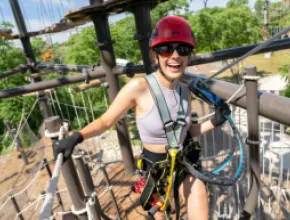
April 04, 2024
Technological advances, innovations and analytics are driving the indoor sports surface manufacturing industry, creating multiple buying options for
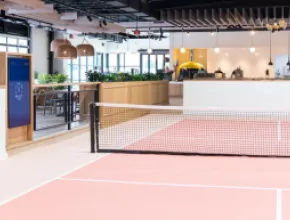
April 04, 2024
Proper maintenance in aquatic facilities is vitally important to protecting the physical health of users and the financial health of the operators.

April 04, 2024
I recently stopped at a park along a river in my hometown. Upon entering from the parking lot, a sign with vibrant graphics and colors shared rules
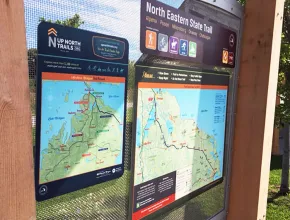
April 04, 2024
What does eco-minded recreation facility design have in common with basketball legend LeBron James? Both are focused on conserving as much energy as

April 04, 2024
Kids don’t love staying in one spot. Anyone who has been around children will think that’s an obvious statement, but this is a lesson I learned in
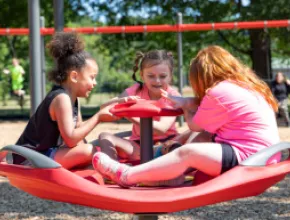
April 04, 2024
Last month, I wrote about the old saw about lions and lambs in March, noting that around here, the month arrived in a decidedly lamblike fashion. We’
April 03, 2024
Durable DockTangent Marine Decking is the durable, low-maintenance marine dock board with exceptional performance and wood-like
April 02, 2024
Problem: How can we offer more play opportunities?SOLUTION: Volo™ is a play-packed structure that soars with fun.
April 02, 2024
A Beacon for Your CommunityStern-Williams offers a solution to help keep parks safe with their Solar Light Option, designed to
April 02, 2024
Incorporated in 1984 by David Park, William Hillman Jr. and Key Ellis, the American Therapeutic Recreation Association (ATRA) is a national
April 02, 2024
Social media and word-of-mouth are popular ways to find out what’s happening in one’s own community, according to the latest National Recreation and
|
|